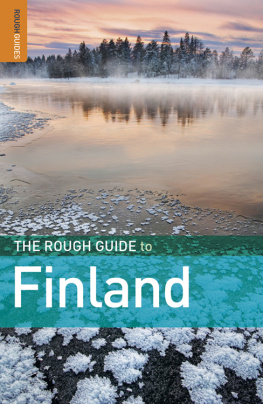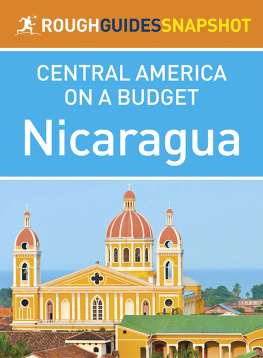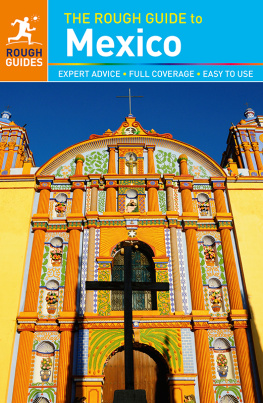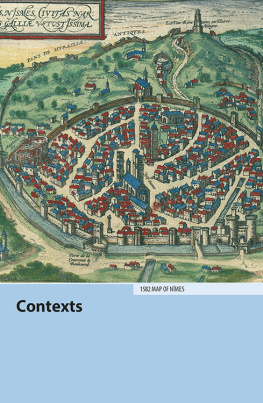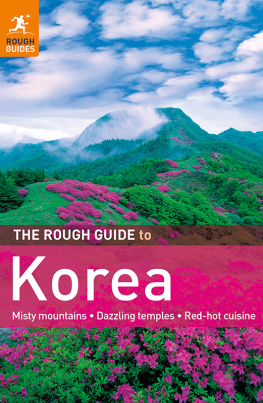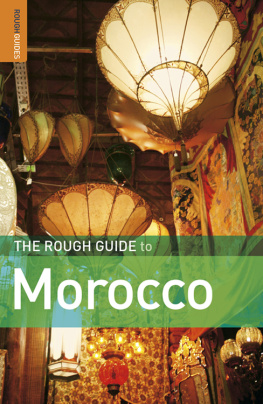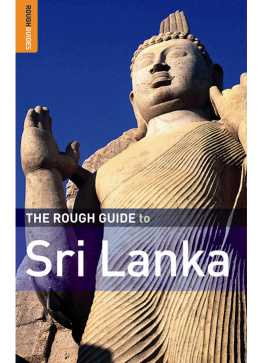How to Use this Rough Guide ePub
This Rough Guide is one of a new generation of informative and easy-to-use travel-guide eBooks that guarantees you make the most of your visit before, during and after your stay. Use this eBook both to plan your trip and explore your destination when visiting. So, before you depart, check out the illustrated Introduction, plan your itinerary using the wealth of suggestions on offer, or simply browse the guide and be inspired.
The best way to explore this guide is to begin at the main table of contents. The first section of the eBook gives you a flavour of the destination, with must-see sights and suggested itineraries. This is followed by: the Basics essential practical information; the best sights, area by area; listings on everything from hotels and restaurants to festivals; and Contexts, the history of the destination and its presence in popular culture.
Shorter contents lists appear at the start of every section in the guide, and are designed to make chapter navigation quick and easy. You can jump back to these by tapping the chapter-heading links that sit with an arrow icon at the end of every article.
Every area of the destination has a clear and beautifully presented map. Depending on your hardware, you will be able to double-tap on the maps to see larger-scale versions fill your screen.
As you use this guide, youll notice that some entries are marked by a small Rough Guides running man icon; this denotes the authors picks. You can select your own favourites and create a personalized itinerary by bookmarking the sights, venues and activities that are of most interest, giving you the quickest possible access to everything youll need for your time away.
Introduction to Finland
Undoubtedly one of Europes least understood countries, Finland is also one of the continents most enigmatic and intriguing places to visit. Scrunched into the eastern pocket of Scandinavia and flanked to the east by the lengthy Russian border nearly all the way to the Arctic Sea, this captivating cultural anomaly remains the most unique of all the Scandinavian nations, having long cultivated a strong and distinctive sense of identity. Finland offers its citizens one of the worlds most enviable standards of living, to say nothing of a stellar transport system, cradle-to-grave infrastructure and extremely safe cities and towns. Tack on to this a hip, happening and ridiculously walkable capital, and an enviable collection of national parks, birch forests and immaculate waterways rivers that empty out into the Baltic and Bothnian seas as well as nearly 200,000 inland lakes and you can see why Finns have kept their fabulous country a secret.
Finland was long a pawn played between the rulers of the Swedish and Russian empires, but since its independence in 1917, the country has fully come into its own. That Finns speak a language unrelated to most European tongues hasnt made being accepted any easier, of course though their near-native fluency in English certainly has.
However the Finns ties to their own history and traditions should not be underestimated. This is by far the most ethnically homogenous nation in the EU, with very little foreign immigration though the countenance of the country is changing, especially in the capital. Since Finland was part of both Sweden and Russia for eons, it has only recently had the opportunity to play any decisive role in European affairs and it has risen to the occasion with strong social democratic principles, an excellent welfare and social services system and an interest in the environment and sustainable industry that is decades ahead of many other nations. Though on the whole Finns tend to be more taciturn, introverted and reserved than other Nordic peoples, once they invite you into their homes and their saunas youll find them to be extremely welcoming, good humoured and great fun.
Although Finland is one of Europes largest countries geographically, it maintains a dependable railway system that stretches from the far south all the way up to Rovaniemi in the Arctic north, covering most all major cities in between and when trains dont go to some of the smaller settlements, buses generally will. The many islands that make up Finlands archipelagoes, meanwhile, are linked by regular (and often free) ferries. The bulk of visitors are drawn to the major cities of Helsinki, Turku and Tampere all sizable settlements with a striking small-town charm. Still, it would be a shame to miss some of the more pastoral areas of the country many of them gorgeous, Arcadian little settlements especially as Finlands sense of place in the modern world is strongly tied to the past of its rural villages. After the sauna and monster-mask heavy metal bands, Finland is perhaps best known for its great outdoors: millions of acres of forests, plains, meadows, rivers, lakes, islands and beaches.
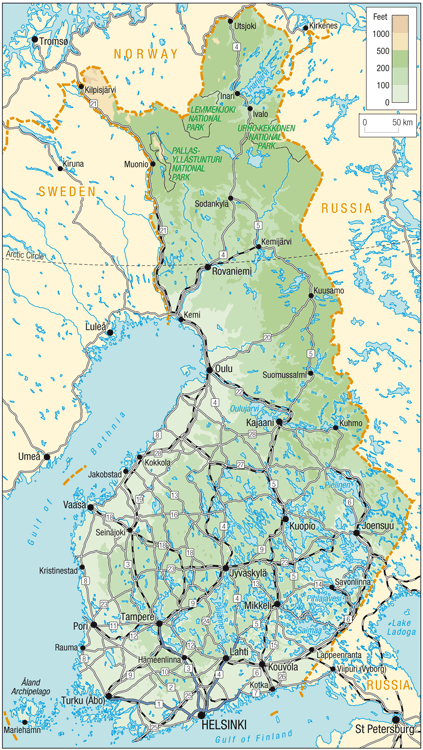
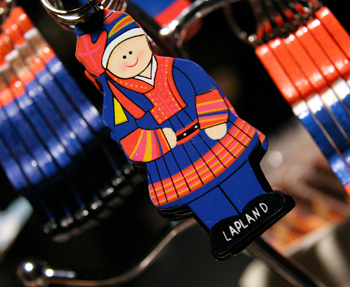
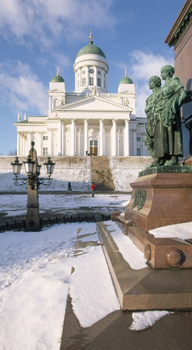
Lutheran Cathedral, Helsinki
Fact file
Finland is one of the five Nordic nations and, with a total land area of 338,145 square kilometres, one of the largest (its slightly smaller than Germany). The population is 5.35 million with an average of seventeen people per square kilometre, this is the least densely populated country in the EU. A mere 2.2 percent of the population is made up of foreign-born citizens and their descendants. Unemployment averages 6.8 percent, above the European average.
The standard of living in Finland is one of the highest in the world income tax hovers around 31.5 percent (lower than the other Nordic countries), and 22 percent VAT is levied on most goods. In return Finns receive free, comprehensive social welfare.
Finland is not called the land of a thousand lakes for nothing; in fact there are 187,880 of them, more lakes than any other country in the world. Lakes make up ten percent of the countrys land mass; forests cover nearly seventy percent of whats left.
The human population of Finnish Lapland is 188,000. The reindeer population is 210,000.
According to a recent study, Finland is the least corrupt, most competitive and most democratic country in the world and its near the top of the list for environmental sustainability and technological innovation, too.
Finland has nearly one sauna for every two people.
Finns are the worlds highest per-capita consumers of coffee, drinking some 5.7 cups a day, or 10kg per year.
Where to go
Nearly all visitors get their first glimpse of Finland through dynamic, spirited Helsinki, the countrys largest transport gateway and an absolute must see, given that it is one of Europes most culturally vibrant and exciting cities and fundamental to understanding what Finns are really about. Handsome and historic, Helsinki offers visitors a clutch of interesting museums, intriguing architecture, cutting-edge design shops, an enviable caf and restaurant scene and a simmering nightlife. In summer the entire city is overtaken with concerts, performances and festivals many of which are free.
Outside Helsinki are a number of coastal destinations easily reached by a short bus or train ride, including riverside

